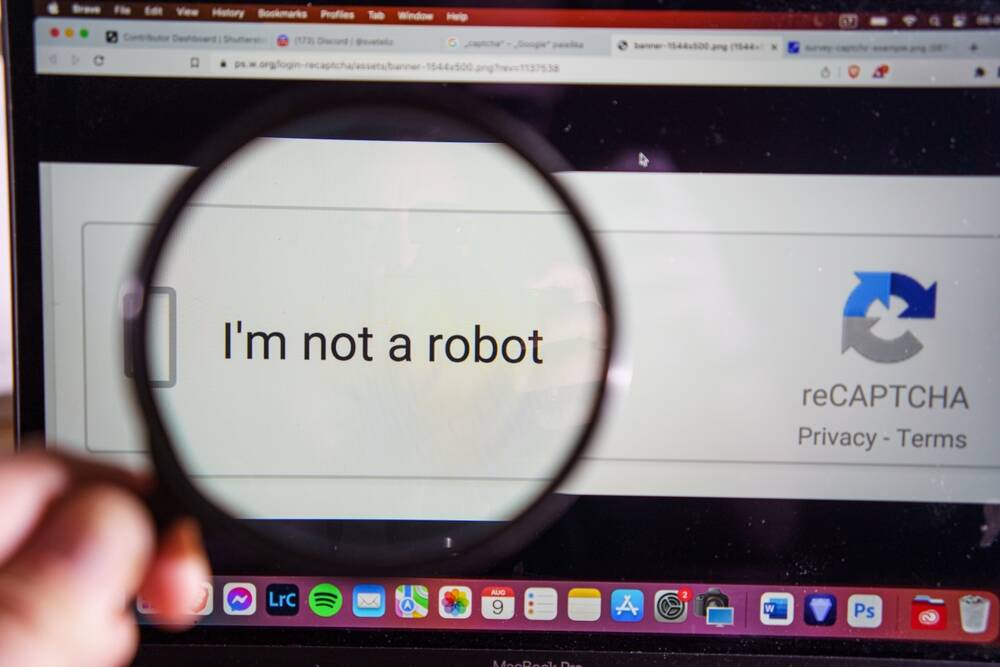
Google promotes its reCAPTCHA service as a security mechanism for websites, but researchers affiliated with the University of California, Irvine, argue it’s harvesting information while extracting human labor worth billions.
The term CAPTCHA stands for “Completely Automated Public Turing test to tell Computers and Humans Apart,” and, as Google explains, it refers to a challenge-response authentication scheme that presents people with a puzzle or question that a computer cannot solve.
[…]
The utility of reCAPTCHA challenges appears to be significantly diminished in an era when AI models can answer CAPTCHA questions almost as well as humans.
Show me the money
UC Irvine academics contend CAPTCHAs should be binned.
In a paper [PDF] titled “Dazed & Confused: A Large-Scale Real-World User Study of reCAPTCHAv2,” authors Andrew Searles, Renascence Tarafder Prapty, and Gene Tsudik argue that the service should be abandoned because it’s disliked by users, costly in terms of time and datacenter resources, and vulnerable to bots – contrary to its intended purpose.
“I believe reCAPTCHA’s true purpose is to harvest user information and labor from websites,” asserted Andrew Searles, who just completed his PhD and was the paper’s lead author, in an email to The Register.
“If you believe that reCAPTCHA is securing your website, you have been deceived. Additionally, this false sense of security has come with an immense cost of human time and privacy.”
The paper, released in November 2023, notes that even back in 2016 researchers were able to defeat reCAPTCHA v2 image challenges 70 percent of the time. The reCAPTCHA v2 checkbox challenge is even more vulnerable – the researchers claim it can be defeated 100 percent of the time.
reCAPTCHA v3 has fared no better. In 2019, researchers devised a reinforcement learning attack that breaks reCAPTCHAv3’s behavior-based challenges 97 percent of the time.
[…]
The authors’ research findings are based on a study of users conducted over 13 months in 2022 and 2023. Some 9,141 reCAPTCHAv2 sessions were captured from unwitting participants and analyzed, in conjunction with a survey completed by 108 individuals.
Respondents gave the reCAPTCHA v2 checkbox puzzle 78.51 out of 100 on the System Usability Scale, while the image puzzle rated only 58.90. “Results demonstrate that 40 percent of participants found the image version to be annoying (or very annoying), while <10 percent found the checkbox version annoying,” the paper explains.
But when examined in aggregate, reCAPTCHA interactions impose a significant cost – some of which Google captures.
“In terms of cost, we estimate that – during over 13 years of its deployment – 819 million hours of human time has been spent on reCAPTCHA, which corresponds to at least $6.1 billion USD in wages,” the authors state in their paper.
“Traffic resulting from reCAPTCHA consumed 134 petabytes of bandwidth, which translates into about 7.5 million kWhs of energy, corresponding to 7.5 million pounds of CO2. In addition, Google has potentially profited $888 billion from cookies [created by reCAPTCHA sessions] and $8.75–32.3 billion per each sale of their total labeled data set.”
Asked whether the costs Google shifts to reCAPTCHA users in the form of time and effort are unreasonable or exploitive, Searles pointed to the original white paper on CAPTCHAs by Luis von Ahn, Manuel Blum, and John Langford – which includes a section titled “Stealing cycles from humans.”
[…]
As the paper points out, image-labeling challenges have been around since 2004 and by 2010 there were attacks that could beat them 100 percent of the time. Despite this, Google introduced reCAPTCHA v2 with a fall-back image recognition security challenge that had been proven to be insecure four years earlier.
This makes no sense, the authors argue, from a security perspective. But it does make sense if the goal is obtaining image labeling data – the results of users identifying CAPTCHA images – which Google happens to sell as a cloud service.
“The conclusion can be extended that the true purpose of reCAPTCHA v2 is a free image-labeling labor and tracking cookie farm for advertising and data profit masquerading as a security service,” the paper declares.
[…]


















